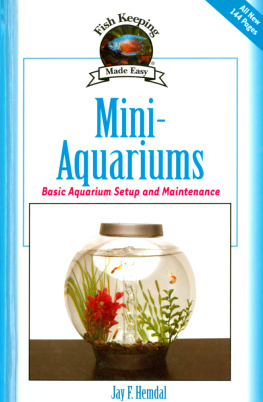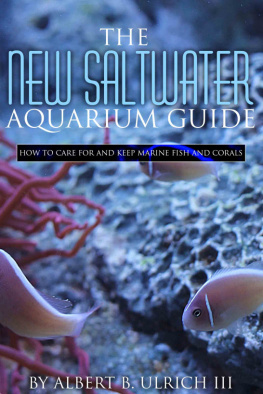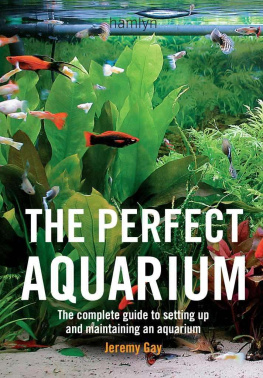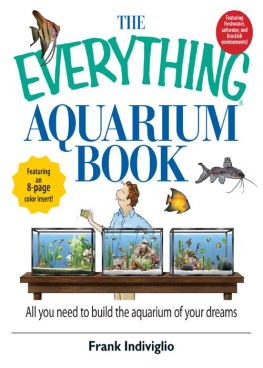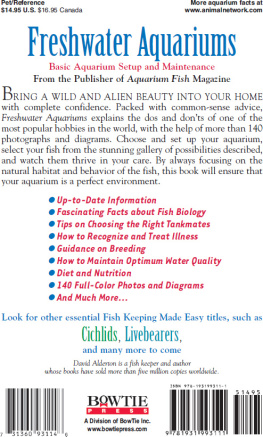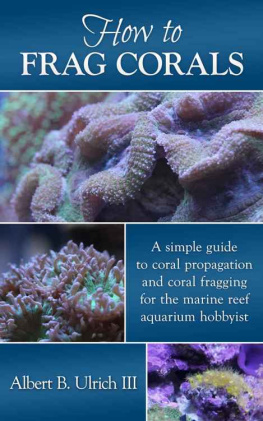

Karla Austin, Business Operations Manager
Nick Clemente, Special Consultant
Jarelle S. Stein, Editor
Kendra Strey, Assistant Editor
Jill Dupont, Production
Alleen Winters, Design
Indexed by Kenneth Brace
Cover photograph by Oliver Lucanus/Belowwater.com.
All illustrations are by Laurie OKeefe.
All photographs are by Ray Hunziker unless otherwise noted.
The additional photographs in this book are by: 6, 19, 27, 33, 34, 45, 53, 61, 62, 92 top, 97, 104 top, 106, 107, 112, 115, 117, 127 bottom, 132, 134: Sally McCrae Kuyper; 17, 29, 32, 52: Derk R. Kuyper; : (2005) JupiterImages and its Licensors;18, 51, 60, 72, 7577, 80, 81 top, 82, 84, 86, 100, 114 top, 120,121, 133: Scott W. Michael.
Copyright 2005 by I-5 Press
All rights reserved. No part of this book may be reproduced, stored in a retrieval system, or transmitted in any form by any means, electronic, mechanical, photocopying, recording, or otherwise, without the prior written permission of I-5 Press, except for the inclusion of brief quotations in an acknowledged review.
Library of Congress Cataloging-in-Publication Data
Hunziker, Raymond E.
Marine aquariums / by Ray Hunziker.
p. cm.
ISBN 1-931993-64-5
eISBN 978-1-62008-007-8
1. Marine aquariums. I. Title.
SF457.1H86 2005
639.34'2dc22
I-5 Press
A Division of I-5 Publishing, LLC
3 Burroughs
Irvine, California 92618
Printed and bound in Singapore
10 9 8 7 6 5 4 3 2 1
Dedicated to Danny and Katie with love from Uncle Ray.
Contents
Introduction: Is a Marine Aquarium Right for You?
Like many before you, you find yourself enchanted by the beauty of the seas and the glorious colors of the fish and other creatures of the coral reef. Having your own marine aquarium will allow you to enjoy that beauty at home. Before taking the plunge, however, ask yourself: Is a marine aquarium right for me? Do I have the experience and the commitment it will take to make it a success?
E xperience. I strongly recommend that you spend some time getting your feet wet with freshwater aquarialearning the basics of water quality, how to select and maintain filters and other equipment, and how to select fish and mix them to create compatible communities. Once you have that wet thumb, success with a marine aquarium will be more likely.

The bright colors of marine fish make it easy to understand their appeal. Don't head to the fish store too soonbe sure you first understand the requirements of maintaining your aquarium before making that first purchase.
Commitment. You should be a detail-oriented person who doesnt mind maintenance chores and monitoring. If youre willing to devote a minimal amount of time every day, you may be ready for a marine aquarium. There will also be a financial commitment; theres no denying that its more expensive than a freshwater aquarium. However, marine aquariumkeeping is still cheaper than a lot of other hobbies. Youll almost certainly spend less than a car collector or electronics nut!
I took the plunge into the marine hobby some years ago, and I hope that my experience will help you create a successful and attractive marine aquarium on your first try. First, well lay the groundwork with some of the science that makes a marine aquarium work. Then, well look at the nuts and bolts of the operationthe aquarium and the equipment that keeps it running smoothly. Finally, well consider a cross section of fish youre likely to see at your local fish store. I wont be shy about using both their common and scientific (Latin) names, and neither should you. At the end of our journey, youll have the most important toolsknowledge and commitmentto make your dream aquarium into a reality.
A WORD ON CONSERVATION
In our ecologically conscious world, marine aquariums pose some controversy. Be an informed consumer. Let your local fish store know that you want them to buy only from collectors who use responsible methods (such as nets, not drugs), to buy aquacultured species when available, and to stock only creatures that can be kept alive in captivity. Additionally, you can support the efforts of groupssuch as the Marine Aquarium Council (www.aquariumcouncil.org)that seek to educate the hobbyist, the local fish store, and the public about responsible collecting and keeping of reef fish and other organisms.
CHAPTER 1 | Seawater and Water Quality |
Though many people use the terms saltwater and seawater interchangeably, the distinction between the two is important. Seawater is a complex combination of chemicals with interesting and unusual characteristics. Before you start setting up your tank, its very important to understand what makes up a balanced aquarium, and the most important element is the water itself. What makes seawater special? Why is it important to simulate it as closely as possible in marine aquariums?
T he major component of seawater is good old H2O. The various elements and compounds that make seawater different from freshwater are dissolved solids, liquids, and gases. The most important of these are salts, and the most abundant salt in seawater is sodium chloride (NaCl), chemically identical to the salt in the shaker on your dinner table. When dissolved in water, salts break into their component atoms. This process is called dissociation. When salts dissociate, their component atoms carry tiny positive and negative electrical charges and are called ions. Scientists measure the amount of salt in seawater by measuring the amounts of the ions sodium (Na+) and chlorine (Cl), along with smaller amounts of other ions.
In fact, although natural seawater contains more than 70 elements, only 7 ions make up nearly 100 percent (by weight) of all the dissolved solids in a volume of seawater: chlorine (Cl, 55.2 percent), sodium (Na+, 30.7 percent), sulfate (SO42, 7.7 percent) magnesium (Mg2+, 3.7 percent), calcium (Ca2+, 1.2 percent), potassium (K+, 1.1 percent), and bicarbonate (HCO3, 0.4 percent). If you add up the numbers in this list, youll see that they equal exactly 100 percent; however, there is a little bit of rounding error involved. Somewhere in the last 1 percent is everything else, referred to as trace elements.
If you used tests that were sensitive enough, you would find a large number of metals in seawatereven copper, gold, and silver. There are also small amounts of dissolved gases, including all those normally found in the atmosphere, such as nitrogen, oxygen, and carbon dioxide. Some of these trace elements and gases are very important to living creatures. For example, if your aquarium had no dissolved oxygen, or too much carbon dioxide, your fish would suffocate. However, some of the trace elements, especially the metals, are toxic when present in quantities greater than the levels found in natural seawater.
Therefore, when obtaining seawater for marine aquariums, it is very important to consider the source. Unfortunately, its not as simple as going down to the beach, walking out into the surf, and collecting your own natural seawater. In North America its becoming increasingly tough to find clean coastal seawater. Inshore estuaries are often polluted with heavy metals, petroleum chemicals from boat traffic, and suspended sediment. Artificial sea salt mixes available at your local fish store offer a safer alternative, providing your aquarium with the major, minor, and trace elements found in natural seawater.
Next page


